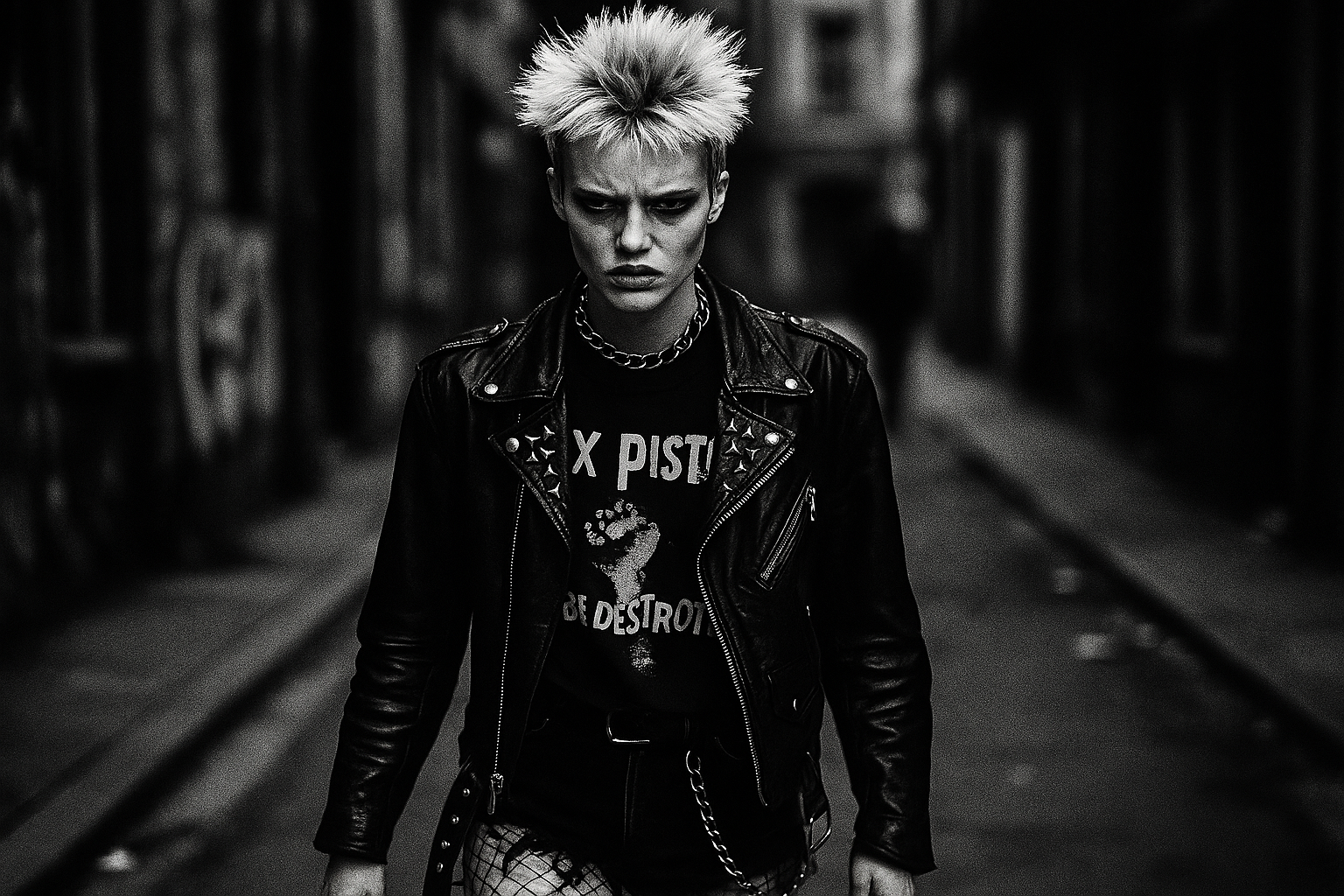Punk's Chaotic Revival is Fashion's Necessary Revolution
The immaculate polish that has dominated luxury runways for seasons is cracking under pressure. Look closely at the collections emerging from studios around the globe and you'll spot the telltale signs: deliberately unfinished hems, safety pins as statement accessories, distressed fabrics that reject perfection. Fashion's pendulum has swung decisively toward raw expression, and punk's rebellious language is being fluently spoken across collections from London to Tokyo.
The immaculate polish that has dominated luxury runways for seasons is cracking under pressure. Look closely at the collections emerging from studios around the globe and you'll spot the telltale signs: deliberately unfinished hems, safety pins as statement accessories, distressed fabrics that reject perfection. Fashion's pendulum has swung decisively toward raw expression, and punk's rebellious language is being fluently spoken across collections from London to Tokyo.
We're living in chaotic times. Why pretend otherwise? Emerging designer Kat Velez, whose recent collection featured hand-distressed denim paired with precisely tailored wool jackets, fits this notion. There's something dishonest about pretending everything is perfect when the world is literally and figuratively on fire. This sentiment echoes across studios where young designers are challenging luxury's long-held equation of perfection with quality.
At Parsons and Central Saint Martins, graduating collections increasingly showcase techniques that deliberately reveal process—loose threads, visible mending, garments that wear their making on their sleeve. But this isn't mere regression to the 1970s King's Road aesthetic. Today's punk-influenced designs are more sophisticated in their rebellion. Take Simone Rocha's recent collections, which juxtapose pearls and tulle with spikes and straps, or Chopova Lowena's disruptive mixing of folklore references with punk hardware. These designers aren't copying Malcolm McLaren and Vivienne Westwood—they're engaging in conversation with punk's foundational values while bringing entirely contemporary technical prowess.
Major houses, too, are responding to this cultural current. Demna Gvasalia's work at Balenciaga has long embraced a certain confrontational quality, but recent collections have leaned further into distortion and deconstruction. Even Valentino, under Pierpaolo Piccioli, has experimented with punk sensibilities through unexpected color combinations and subversive styling choices.
The commercial viability of this aesthetic shift suggests it's more than passing trend. Consumers, particularly younger ones, are increasingly drawn to clothing that feels authentic rather than aspirational in the traditional sense. The perfectly curated life is losing appeal as a generation faces economic uncertainty, climate anxiety, and political upheaval.
